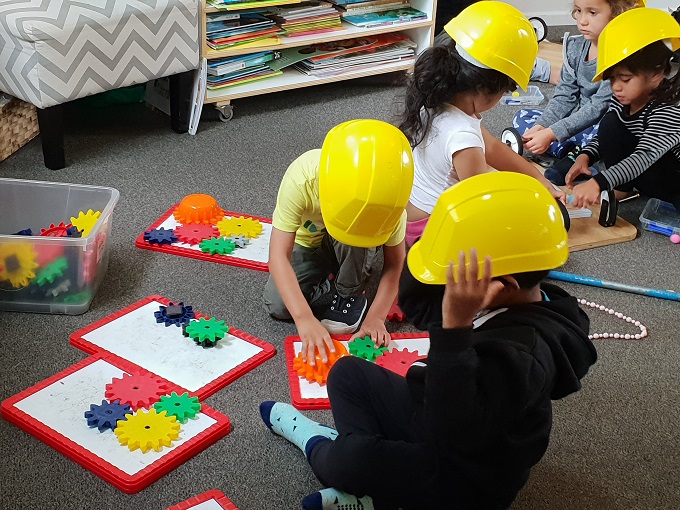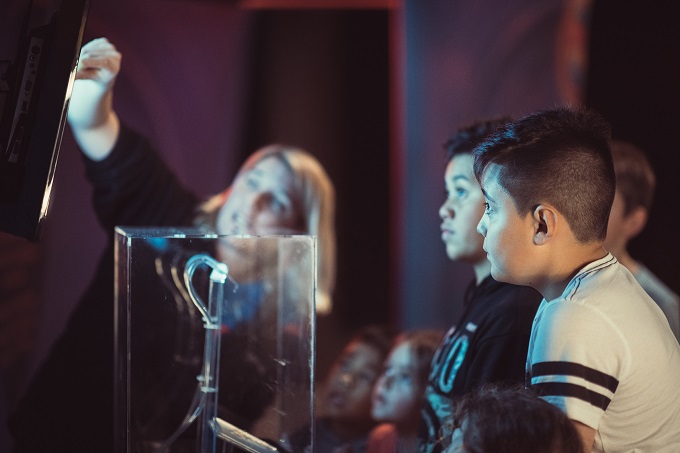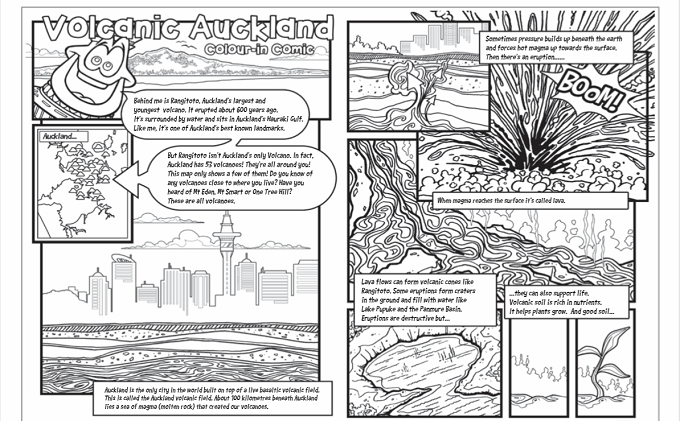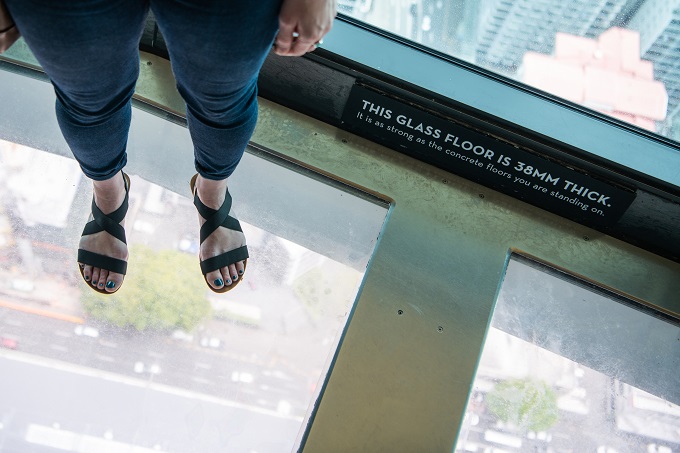Auckland’s LEOTC community is ready for you

The realm of LEOTC is about to change!
Not quite yet. But in 2021, the Ministry of Education will start scouting for providers around the country that deliver experiences for school groups “across the national curriculum rather than the current subject-based rolling cycle”.

It’s an interesting – if vague – move that strives to enrich the focus on integrated learning we have seen wash through the curriculum in recent years. It’s unlikely we will know much more about the re-worked LEOTC approach until the Ministry makes an update announcement, which has been promised for Term 4.
What we do know, is that Ministry research to date has emphasised the importance of teacher planning and, in particular, engaging with onsite LEOTC education officers before, during and after a site visit. Auckland is a city teeming with LEOTC opportunities that schools around the country can take advantage of, but a lot still comes down to how well a lead teacher can structure their unit.

Establishing learning goals with the site officer to make sure the visit will relate to a wider unit being studied, is essential. MoE advises teachers “link pre-visit learning activities with the site visit, and follow up with post-visit activities and discussions” to make the most of each learning opportunity. It’s also good to note that students tend to absorb more when learning goals are reiterated both at school and onsite; and they prefer working in small groups. Pre-visit activities are particularly useful as they introduce students to new vocabulary they may find onsite and they help define the purpose of a trip, especially if the trip has lots of components or involves a large city with many opportunities like Auckland.
In case studies presented by the department, students “learned from education officers who were enthusiastic”. So, it is worthwhile for teachers to build rapport with education officers and programme organisers on sites being visited.
| Large student group? Here’s how a day trip to MOTAT* might look for 90 kids: | ||
6:30-8:30 – Breakfast at hotel. Discuss planned activities and assignments for the day. Split large group into three smaller groups and announce prize for group that engages with museum content the most effectively. | ||
9:00 – Travel to MOTAT by bus or coach. Auckland Transport buses and the OuterLink bus service MOTAT from the CBD every 15 minutes, while the Auckland Explorer Bus can schedule stops at MOTAT along its tour route upon request. | ||
| Group 1 Approx. Students: 30 | Group 2 Approx. Students: 30 | Group 3 Approx. Students: 30 |
| 9:45 – Welcome, orientation & morning tea | 9:45 – Welcome, orientation & morning tea | 9:45 – Welcome, orientation & morning tea |
| 10:10 – Transport launch with educator | 10:10 – Transport launch with educator | 10:10 – Explore MOTAT exhibition displays |
| Transport challenge: students get their hands dirty to ‘put out a fire’ and explore the site. Use a tablet to engage digitally, complete the interactive program and develop key competencies. | Transport challenge: students get their hands dirty to ‘put out a fire’ and explore the site. Use a tablet to engage digitally, complete the interactive program and develop key competencies. | 11:00 – Tram ride: students can note various sights en-route as they ride past Western Springs Park and Auckland Zoo. |
| 11:45 – Wrap-up challenge with educator | 11:45 – Wrap-up challenge with educator | 11:30 – Picnic lunch on the historic Village Lawn (check out Tram 91). |
| 12:00 – Picnic lunch on the historic Village Lawn (check out Tram 91). | 12:00 – Picnic lunch on the historic Village Lawn (check out Tram 91). | 12:00 – Transport launch with educator |
| 12:30 – Explore MOTAT exhibition displays | 12:30 – Explore MOTAT exhibition displays | Transport challenge: students get their hands dirty to ‘put out a fire’ and explore the site. Use a tablet to engage digitally, complete the interactive program and develop key competencies. |
| 13:00 – Tram ride: students can note various sights en-route as they ride past Western Springs Park and Auckland Zoo. | 13:30 – Tram ride: students can note various sights en-route as they ride past Western Springs Park and Auckland Zoo. | 13:45 – Wrap-up challenge with educator |
| 13:30 – Explore MOTAT exhibition displays | 3:30 – Western Springs Park and Auckland Zoo. | |
| DEPART MOTAT AT 2.00 PM | ||
| *Example timetable only | ||
Julie Baker, the education manager at MOTAT, said her top tip for school groups on a budget was to “hop on the Auckland Explorer ‘hop on hop off’ bus in the CBD” and check out all the curriculum aligned learning experiences provided by many different attractions in Auckland. She explained that MOTAT, along with the Auckland War Memorial Museum, Auckland Zoo and the National Maritime Museum have Ministry LEOTC contracts to design relevant programs for NZ students.
Workbook inspirations: making the most out of your trip
Workbooks are effective in keeping students engaged in day-time activities. Wherever you are headed on your trip, it’s worth putting together a journal-style booklet for students to come back to, with light activities, space for creative writing or diary entries, drawings, ideas, challenges and even some fun facts.
Here is an excerpt from a workbook provided to pre-booked school groups by Sky Tower. They also provide a lesson plan and guidebook for teachers as their Volcanic Auckland experience is NZ Curriculum aligned and created by NZ teachers.

Must see-and-dos for Sky Tower trips:
- Work through your workbooks as you explore Sky Tower and set prize targets for small groups of students to work together and stay focussed.
- Embrace your inner Willy Wonka and ride up the glass-fronted lifts, 186 metres into the air. (Don’t forget to look down through the glass floor!)
- Walk around the main observation area with 360 panoramic views of Auckland – can anyone spot Rangitoto?
- Have a go at spotting the landmarks, students can check them off or choose one as a story setting to write later.
- Feeling brave? Step onto the glass floor and look down to the street below. Take lots of photos for the yearbook!
- Check out the other towers of the world to see how Auckland measures up. How long would it take a rugby ball to fall to the ground from where you’re standing?
- Head to the on-site café and watch the windows on the right – you might see someone bungy jumping down to the ground!
- Check out any films playing in the Sky Tower theatre – you can discover how the tower was built 20 years ago!
Sky Tower’s very own, Stefanie Gough, told us why “getting out of any ‘local’ area is beneficial”.

She said: “New surroundings create intrigue, thoughts, questions. Education is all about expanding knowledge and stepping out of comfort zones and Auckland is a very diverse city.”
If you’re travelling on a budget: “Look out for group booking rates and attractions that have lunch areas where students can sit and eat a packed lunch.” If you’re venturing a little further outside the city: “Explore Auckland’s volcanoes from the heights of Mt Eden to the beaches of Mission Bay or Kohimarama.”









